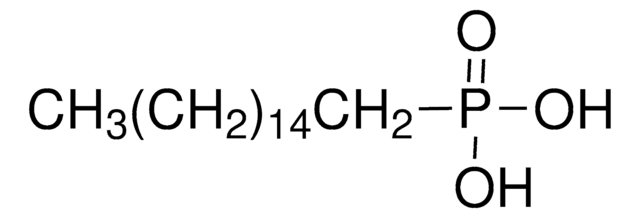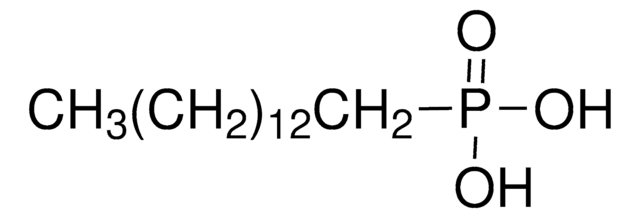735914
Octylphosphonic acid
97%
Sinonimo/i:
n-Octylphosphonic acid, OPA
About This Item
Prodotti consigliati
Saggio
97%
Forma fisica
solid
Punto di fusione
93-98 °C
Stringa SMILE
CCCCCCCCP(O)(O)=O
InChI
1S/C8H19O3P/c1-2-3-4-5-6-7-8-12(9,10)11/h2-8H2,1H3,(H2,9,10,11)
NJGCRMAPOWGWMW-UHFFFAOYSA-N
Descrizione generale
Applicazioni
Avvertenze
Danger
Indicazioni di pericolo
Consigli di prudenza
Classi di pericolo
Acute Tox. 4 Oral - Skin Corr. 1B - STOT RE 2 Oral
Organi bersaglio
Kidney,Bone
Codice della classe di stoccaggio
8A - Combustible corrosive hazardous materials
Classe di pericolosità dell'acqua (WGK)
WGK 1
Punto d’infiammabilità (°F)
Not applicable
Punto d’infiammabilità (°C)
Not applicable
Scegli una delle versioni più recenti:
Possiedi già questo prodotto?
I documenti relativi ai prodotti acquistati recentemente sono disponibili nell’Archivio dei documenti.
I clienti hanno visto anche
Articoli
There is widespread demand for thin, lightweight, and flexible electronic devices such as displays, sensors, actuators, and radio-frequency identification tags (RFIDs). Flexibility is necessary for scalability, portability, and mechanical robustness.
Self-assembled monolayers (SAMs) have attracted enormous interest for a wide variety of applications in micro- and nano-technology. In this article, we compare the benefits of three different classes of SAM systems (alkylthiolates on gold.
Il team dei nostri ricercatori vanta grande esperienza in tutte le aree della ricerca quali Life Science, scienza dei materiali, sintesi chimica, cromatografia, discipline analitiche, ecc..
Contatta l'Assistenza Tecnica.














